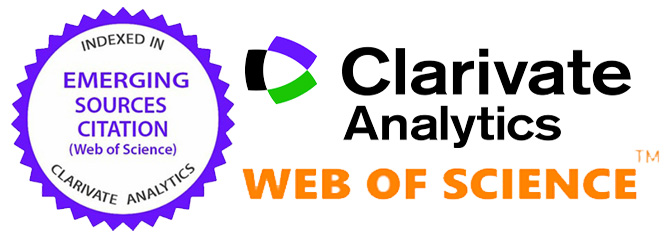Learning for Children with Special Needs of Dyscalculia
Abstract
This study aimed to develop mathematics learning tools to help children with special needs of dyscalculia in elementary school. The procedural development of the device was through a 4-D model consisting of four phases; defining, designing, developing, and disseminating. However, based on the research objectives, this development was limited only to the development stage (develop), which is to the learning device testing activities. So the development of learning tools in this study consisted of three main stages, namely: defining, designing, and development. The results of this study illustrated that learning devices for children with dyscalculia learning disorders could help children more easily deal with learning difficulties. Specifically, it is on the topic of sequencing numbers, addition, and subtraction of integers.
References
Arisandi, E. (2014). Meningkatkan Kemampuan Operasi Perkalian untuk Anak Diskalkulia Melalui Metode Garismatika. Jurnal Penelitian Pendidikan Khusus, 3(3).
Azhari, B. (2017). Identifikasi Gangguan Belajar Dyscalculia Pada Siswa Madrasah Ibtidaiyah. Al Khawarizmi: Jurnal Pendidikan Dan Pembelajaran Matematika, 1(1), 60-74.
Azhari, B., & Irfan, A. (2019). Model-Eliciting Activities dalam Menganalisis Kreativitas Pemecahan Masalah Matematika Pada Mahasiswa Pendidikan Matematika di PTKIN Aceh. Al Khawarizmi: Jurnal Pendidikan dan Pembelajaran Matematika, 2(1), 1-18.
Beacham, N., & Trott, C. (2005). Screening for dyscalculia within HE. MSOR Connections, 5(1), 1-4.
Butterworth, B., & Laurillard, D. (2010). Low numeracy and dyscalculia: identification and intervention. ZDM, 42(6), 527-539.
Butterworth, B., Varma, S., & Laurillard, D. (2011). Dyscalculia: from brain to education. science, 332(6033), 1049-1053.
Bynner, J. & Parsons, S. (1997). Does Numeracy Matter? London: The Basic Skills Agency. Institute of Education: London.
Emerson, J., & Babtie, P. (2014). The dyscalculia assessment. Bloomsbury Publishing.
Essa, H. A. E. G. E., & El-Zeftawy, A. M. A. (2015). Teachers’ knowledge, attitudes, and reported strategies to assess and support students with learning difficulties. Journal of Nursing and Health Science, 4(2), 79-92.
Fathimah, N. S., & Ishartiwi, I. (2018). Pengembangan multimedia permainan interaktif pembelajaran berhitung bagi anak diskalkulia usia prasekolah. Jurnal Inovasi Teknologi Pendidikan, 5(2), 115-128.
Fonna, M., & Mursalin, M. (2018). Role of Self-Efficacy Toward Students’ Achievement in Mathematical Multiple Representation Ability (MMRA). Jurnal Ilmiah Peuradeun, 6(1), 31-40. doi:10.26811/peuradeun.v6i1.174
Gillum, J. (2012). Dyscalculia: issues for practice in educational psychology. Educational psychology in practice, 28(3), 287-297.
Gillum, J. (2012). Dyscalculia: issues for practice in educational psychology. Educational psychology in practice, 28(3), 287-297.
Husen, S., & Mansor, R. (2018). Parents Involvement in Improving Character of Children Through Mathematics Learning. Jurnal Ilmiah Peuradeun, 6(1), 41-50. doi:10.26811/peuradeun.v6i1.178
Kadosh, R. C., Lammertyn, J., & Izard, V. (2008). Are numbers special? An overview of chronometric, neuroimaging, developmental, and comparative studies of magnitude representation. Progress in neurobiology, 84(2), 132-147.
Kay, J., & Yeo, D. (2003). Dyslexia and maths. Routledge.
Madechan, & Desiana, B.N. (2008). Media Benda Nyata untuk Menyelesaikan Soal Cerita Matematika Siswa Diskalkulia. Jurnal Pendidikan Luar Biasa, 4(1), 38-46.
Mussolin, C., De Volder, A., Grandin, C., Schlögel, X., Nassogne, M. C., & Noël, M. P. (2010). Neural correlates of symbolic number comparison in developmental dyscalculia. Journal of cognitive neuroscience, 22(5), 860-874.
Patimah, S., & Tabrani ZA. (2018). Counting Methodology on Educational Return Investment. Advanced Science Letters, 24(10), 7087–7089. https://doi.org/10.1166/asl.2018.12414
Price, G. R., & Ansari, D. (2013). Dyscalculia: Characteristics, causes, and treatments. Numeracy, 6(1), 1-16.
Raharjo, T., Kawuryan, F., & Ahyani, L. N. (2011). Identifikasi Learning Disability pada Anak Sekolah Dasar. Jurnal Sosial Budaya, 4(2), 136-142.
Rapin, I. (2016). Dyscalculia and the calculating brain. Pediatric neurology, 61, 11-20.
Santrock, J.W. (2007). Life-Span Development. NY: McGraw-Hill.
Shalev, R. S., Auerbach, J., Manor, O., & Gross-Tsur, V. (2000). Developmental dyscalculia: prevalence and prognosis. European child & adolescent psychiatry, 9(2), S58-S64.
Shin, M., & Bryant, D. P. (2015). A synthesis of mathematical and cognitive performances of students with mathematics learning disabilities. Journal of learning disabilities, 48(1), 96-112.
Triharso, A. (2013). Permainan kreatif dan edukatif untuk anak usia dini. Yogyakarta: CV Andi Offset.
Usman, H., & Akbar, P. S. (2009). Metode penelitian sosial. Jakarta: Bumi Aksara.
Vitoria, L., & Monawati, M. (2016). Improving Students’ Problem Solving Skill in Mathematics Through Writing. Jurnal Ilmiah Peuradeun, 4(2), 231-238. doi:10.26811/peuradeun.v4i2.100
Walidin, W., Idris, S., & Tabrani ZA. (2015). Metodologi Penelitian Kualitatif & Grounded Theory. Banda Aceh: FTK Ar-Raniry Press.
Williams, A. (2013). A teacher's perspective of dyscalculia: Who counts? An interdisciplinary overview. Australian Journal of Learning Difficulties, 18(1), 1-16.

This work is licensed under a Creative Commons Attribution-ShareAlike 4.0 International License.
Authors who publish with this journal agree to the following terms: (1) Authors retain copyright and grant the journal right of first publication with the work simultaneously licensed under a Creative Commons Attribution-ShareAlike 4.0 International License (CC-BY-SA) that allows others to share the work with an acknowledgment of the work's authorship and initial publication in this journal; (2) Authors are able to enter into separate, additional contractual arrangements for the non-exclusive distribution of the journal's published version of the work (e.g., post it to an institutional repository or publish it in a book), with an acknowledgment of its initial publication in this journal; (3) Authors are permitted and encouraged to post their work online (e.g., in institutional repositories or on their website) prior to and during the submission process, as it can lead to productive exchanges, as well as earlier and greater citation of published work (See The Effect of Open Access).

























